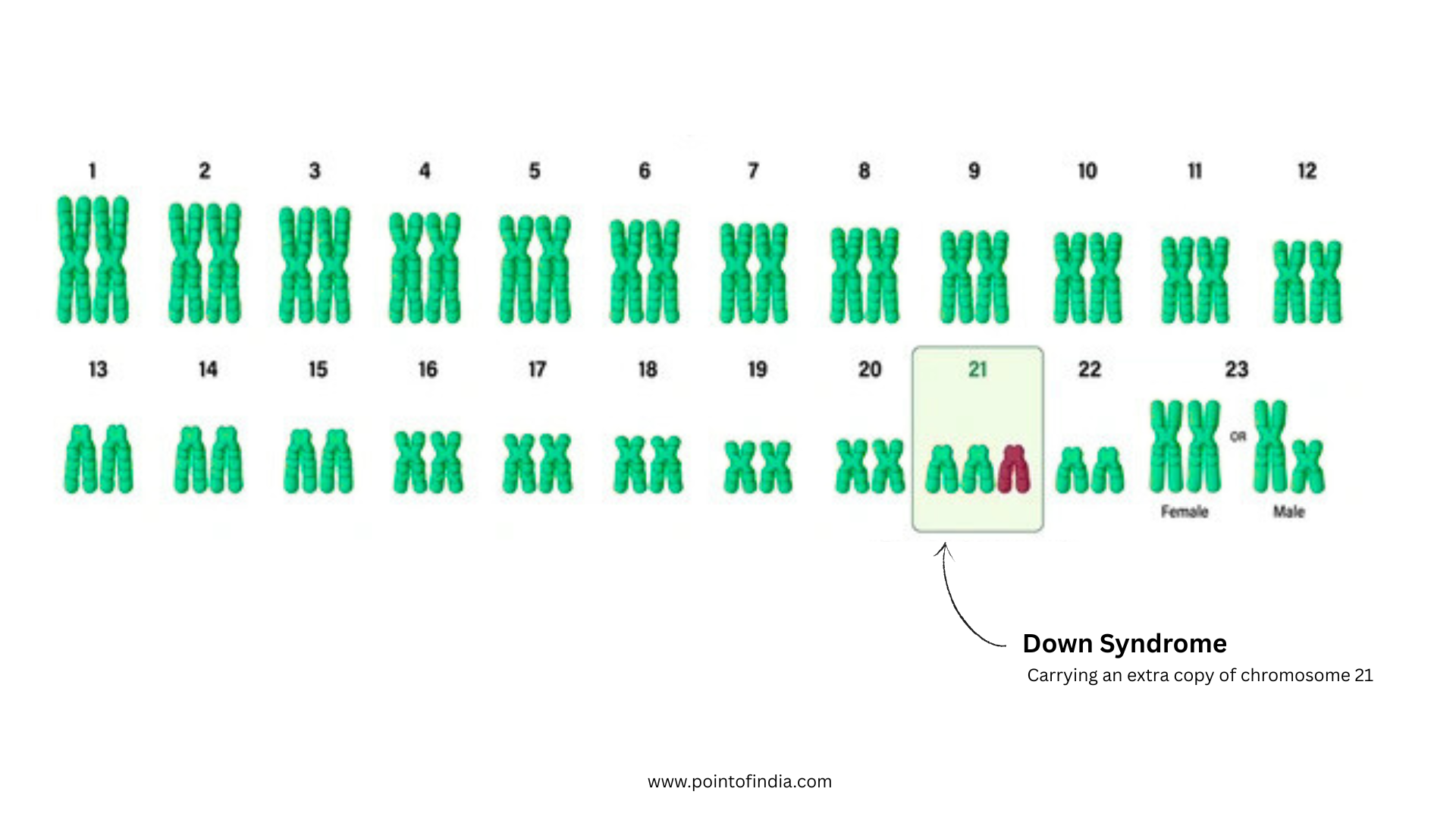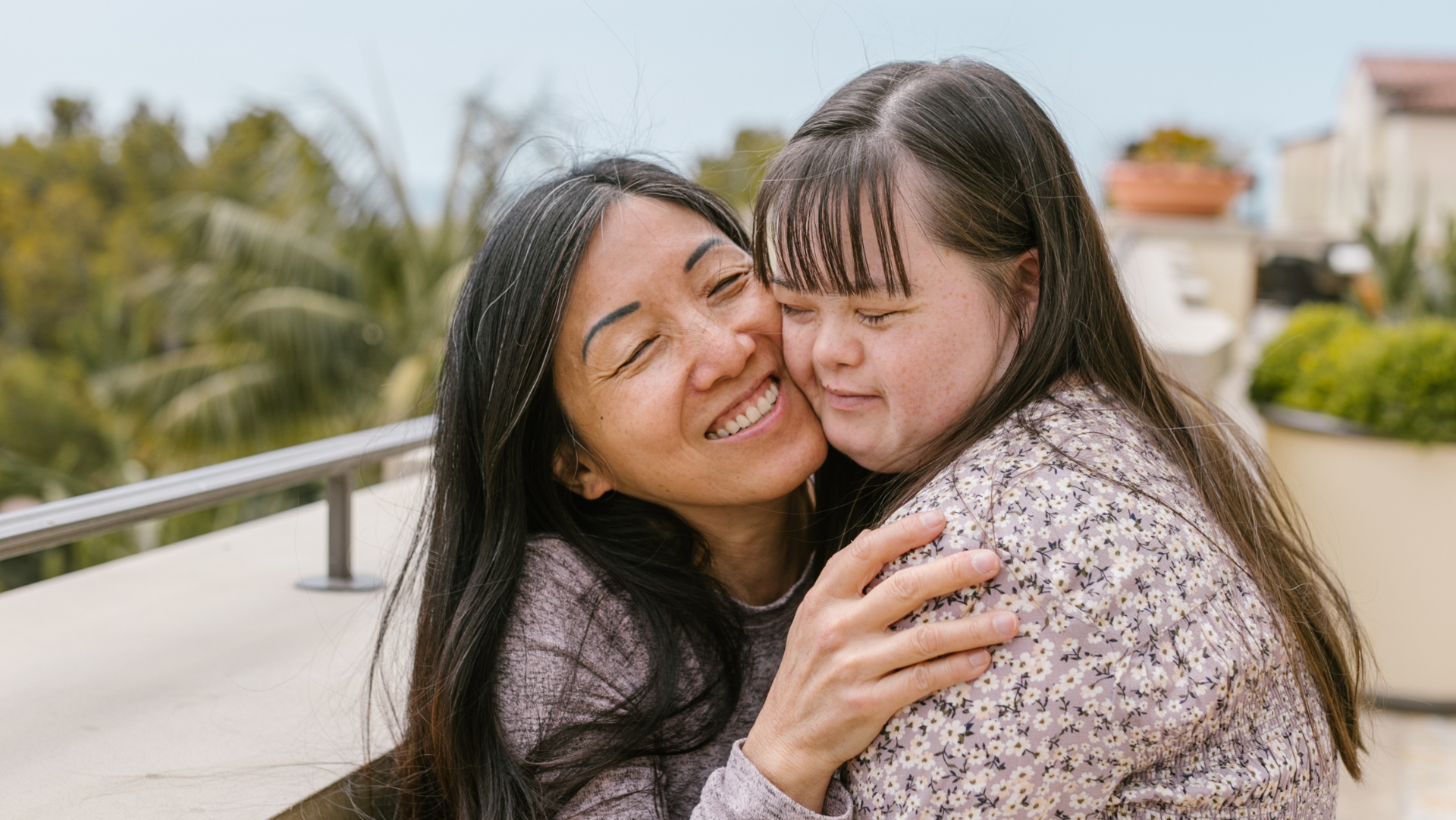Down Syndrome is a genetic condition where a baby is born with an extra copy of chromosome 21. This small change in chromosomes affects both the body and the mind of the child. It is not a disease you can catch or spread — it simply happens at birth. With proper medical care, education, and family support, children with Down Syndrome can live long, meaningful, and happy lives in India.
Disease, Disability, or Syndrome? What’s the Difference?
- Disease: A condition that usually has an identifiable cause and can be treated or cured (e.g., measles or diabetes).
- Disability: A physical or mental limitation that affects daily life (e.g., vision impairment).
- Syndrome: A collection of symptoms and physical features that occur together due to a single underlying cause, but not necessarily a “disease” (e.g., Down Syndrome).
Down Syndrome is a syndrome because it involves a pattern of physical, intellectual, and developmental traits caused by an extra chromosome.
A Brief History
Down Syndrome is named after John Langdon Down, a British doctor who first described the condition in 1866. However, it wasn’t until the 1950s that scientists discovered the chromosomal cause — an extra copy of chromosome 21, also known as trisomy 21. Today, this genetic understanding helps in early detection and support.
How Does It Happen?
Normally, every human has 23 pairs of chromosomes — one from the mother and one from the father. In the case of Down Syndrome, the baby gets three copies of chromosome number 21 instead of two. That is why it is also called trisomy 21.
This extra chromosome causes changes in physical growth, learning ability, and facial features. Importantly, this condition is not caused by lifestyle, food, or environment — it happens due to a natural error in cell division.

Illustration Showing Extra Copy of Chromosome 21 in Down Syndrome
Chances of Having a Baby with Down Syndrome
- On average, 1 out of every 1,000 babies born worldwide has Down Syndrome.
- In India, lakhs of families live with this condition, though exact numbers are not always recorded.
- Women who become pregnant after the age of 35 have higher chances of giving birth to a baby with Down Syndrome.
- If a couple has already had one child with Down Syndrome, the chances of the next child being affected are slightly higher.
How Can It Be Detected?
In India, many doctors recommend prenatal screening tests during pregnancy. These tests can indicate if the baby has a higher chance of having Down Syndrome. If results are concerning, genetic tests like amniocentesis can confirm it.
Early diagnosis helps parents prepare for special care, therapies, and support for the child.
Common Signs and Symptoms
Not every child with Down Syndrome looks or behaves the same, but some common features are:
- Flat face and small head
- Short neck and small ears
- Eyes that slant upwards
- Tongue that sticks out
- Small hands and feet
- One single crease across the palm
- Shorter height than other children
- Loose muscles and flexible joints
Apart from looks, children may also have slow learning, speech delays, and memory problems. Some may have health issues like heart problems or hearing difficulties.
Life Expectancy
In earlier times, people thought children with Down Syndrome could not live long. But today, thanks to better hospitals and medical care in India, many live up to 50–60 years or even longer.
Myths vs. Truth
There are many wrong beliefs in society about Down Syndrome. Let’s clear a few:
- Myth: Down Syndrome is rare. Truth: It is one of the most common genetic conditions worldwide.
- Myth: People with Down Syndrome are always happy. Truth: They have normal emotions just like anyone else — happiness, sadness, anger, and love.
- Myth: They cannot study or work. Truth: With proper training, many children go to school, learn skills, and even work in jobs.
- Myth: They cannot marry or have relationships. Truth: Many adults with Down Syndrome have friends, relationships, and some even marry.
Care and Support for Children in India
There is no cure for Down Syndrome, but early support makes a big difference. Indian families can help their children by:
- Early intervention programs – start therapies from a young age.
- Speech therapy – helps children learn to talk clearly.
- Physical therapy – improves muscle strength and movement.
- Occupational therapy – teaches self-care like dressing, eating, and daily activities.
- Special schools or inclusive education – helps children learn at their own pace.
- Job training – prepares young adults to work and live independently.
- Family and community support – children thrive when they are loved and included.
Parents should also do regular medical check-ups for heart, thyroid, hearing, and eyesight problems.
Down Syndrome is not something to be ashamed of. It is simply a genetic condition that requires love, care, and understanding. With better healthcare, awareness, and education in India, children with Down Syndrome can live long, fulfilling, and independent lives.
Every child is special, and with the right support, children with Down Syndrome can shine just as brightly as anyone else.


